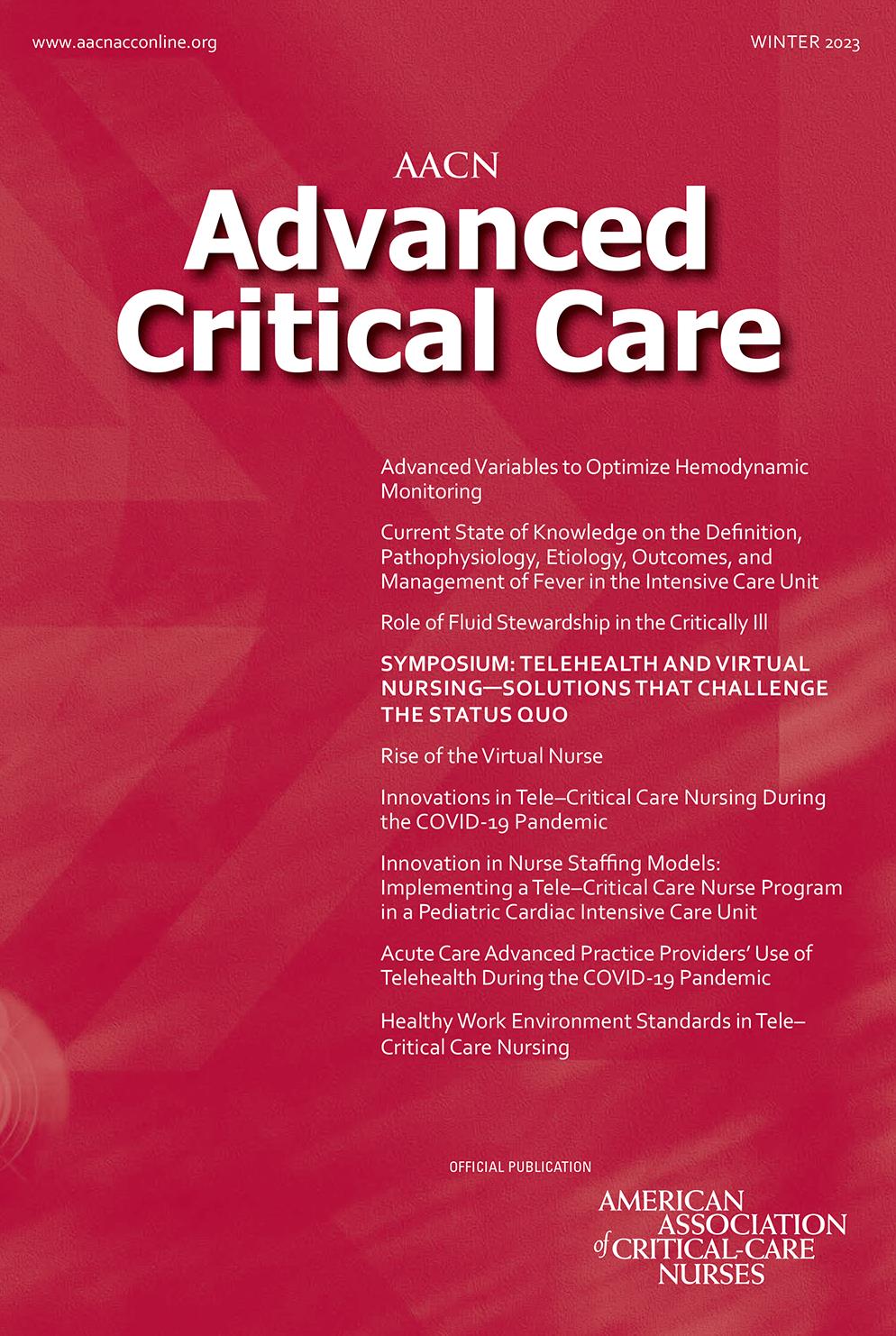What You Get
AACN Advanced Critical Care

Winter 2023
Pages: 273-279
Contact Hours 1.00
CERP A 1.00
Expires Jan 01, 2026
Topics: Hemodynamics
Member: $10.00
NonMember: $10.00
Journal Article
CE Article
Brittany Tyree, PharmD;
Czarina Bock, PharmD, BCPS, BCCCP, CACP
What You Get
AACN Advanced Critical Care

Winter 2023
Pages: 273-279
Contact Hours 1.00
CERP A 1.00
Expires Jan 01, 2026
Topics: Hemodynamics
This article has been designated for CE contact hour(s). The evaluation tests your knowledge of the following objectives:
Describe the characteristics, use, and adverse effects of intravenous fluids in critically ill patients.
Review the literature regarding the selection of an appropriate intravenous fluid.
Identify and implement fluid stewardship strategies in a patient care setting.
Contact hour: 1.0
Pharmacology contact hour: 1.0
Synergy CERP Category: A
To complete evaluation for CE contact hour(s) for article ACC233451, visit https://aacnjournals.org/aacnacconline/pages/ce-articles. No CE evaluation fee for AACN members. See CE activity page for expiration date.
The American Association of Critical-Care Nurses is accredited as a provider of nursing continuing professional development by the American Nurses Credentialing Center’s Commission on Accreditation, ANCC Provider Number 0012. AACN has been approved as a provider of continuing education in nursing by the California Board of Registered Nursing (CA BRN), CA Provider Number CEP1036, for 1.0 contact hour.
A mixture of sodium, bicarbonate, chloride, and water was first infused into a human vein in 1832 and has since been a universal component of critical care medicine.1 Intravenous fluids are the most commonly administered medications in critically ill adults.2 Like all medications, intravenous fluids should be administered for an appropriate indication and duration with consideration for adverse effects. Intravenous fluids are used inappropriately in approximately 20% of patients, increasing the risk of fluid overload.2 Detrimental consequences of fluid overload include organ dysfunction, longer hospital stay, and increased risk of mortality. This article reviews the evidence related to intravenous fluid administration and defines the core concepts of fluid stewardship in the critical care setting.
Learners must complete the entire activity and the associated evaluation to be awarded contact hours AND read Implicit Bias impacts patient outcomes. No partial credit will be awarded.
Accreditation
The American Association of Critical-Care Nurses is accredited as a provider of nursing continuing professional development by the American Nurses Credentialing Center's Commission on Accreditation.
Provider approved by the California Board of Registered Nursing, Provider number CEP 1036, for 1.00 contact hours.
DisclosureAny relevant relationship between an ineligible company and an individual with the ability to influence clinical content will be identified by the Nurse Planner within the activity. Any relevant relationship between an ineligible company and an individual with the ability to influence clinical content has been mitigated.
Accreditation refers to recognition of continuing education only and does not imply AACN, ANCC, or CBRN approval or endorsement of any commercial products discussed or displayed in conjunction with this educational activity.
Activities with pharmacology hours are to assist the APRN in fulfilling the pharmacotherapeutic education requirements for licensure and certification renewals.
Activities meet the standards for most states that require mandatory continuing education for license and/or certification renewal. AACN recommends consulting with your own state board of nursing or credentialing organization before submitting your certificate of completion.Continuing Education Activities are nonrefundable.